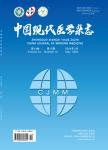10-23DRzs mediated by fluorescent silica nanoparticles inhibit expression of HBV
10-23DRzs mediated by fluorescent silica nanoparticles inhibit expression of HBV作者机构:National Key Laboratory of Nanobiotechnology Ministry of Health Changsha Hunan 410008 P.R.China Merck Sharp & Dohme Changsha Hunan 410008 P.R.China
出 版 物:《中国现代医学杂志》 (China Journal of Modern Medicine)
年 卷 期:2011年第21卷第3期
页 面:354-359页
学科分类:08[工学] 0805[工学-材料科学与工程(可授工学、理学学位)]
基 金:Supported by National Hi-tech Project of China(No.2007AA02-1803 and 2007AA021901)
主 题:10-23DRzs FSNPs HBV gene therapy
摘 要:Objective To prepare fluorescent silica nanoparticles(FSNPs) carrying 10-23 deoxyribozymes(10-23DRzs) and to evaluate their inhibitory effect on human hepatitis B virus(HBV).Methods The FSNPs were prepared by microemulsion method and further modified by NaCl.Their diameter and the Zeta potential were tested.The HBV-specific 10-23DRzs were designed according to the sequences of S and C genes of HBV.The 10-23DRzs were connected to FSNPs,which constituted the FSNPs-DNA.The connecting efficiency and the protective effect of nanoparticles on 10-23DRzs were tested by sodium dodecyl sulfate polyacrylamide gel electrophoresis(SDS-PAGE).The HepG2.2.15 cells were transfected by FSNPs-DNA,of which the inhibitory effects on HBsAg and HBeAg were analyzed by enzyme-linked immunosorbent assay(ELISA).Results The nanoparticles were spherical and uniform in size,with a diameter of 220 nm and the surface Zeta potential of +15.2 mV.The combination of DNA and FSNPs effectively protected DNA from nuclease degradation.Transfection of FSNPs-DNA significantly inhibited the expression of HBV S and C genes compared to the liposome control group.Conclusion The FSNPs have been successfully prepared and efficiently connected to HBV-specific 10-23DRzs,which significantly inhibit the expression of HBV S and C genes in cell culture.



